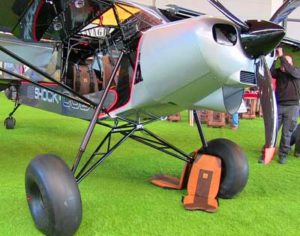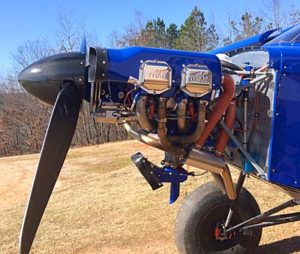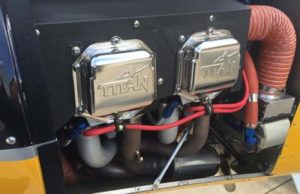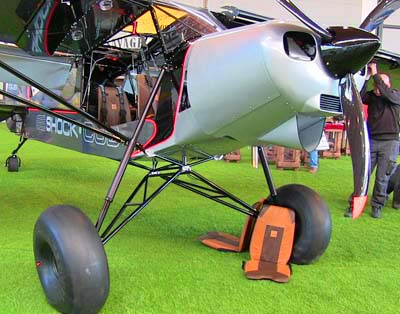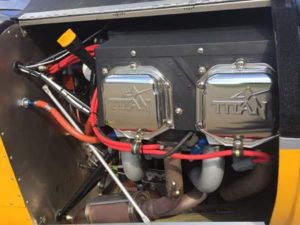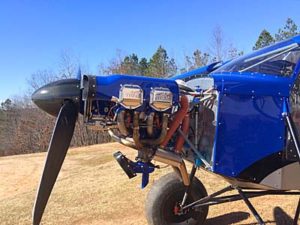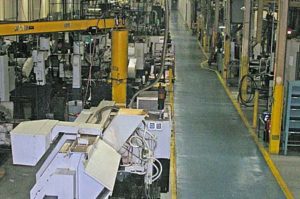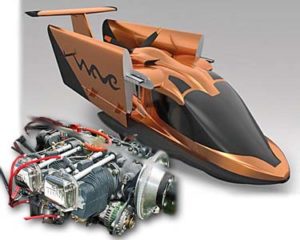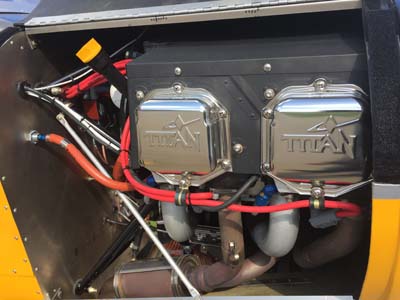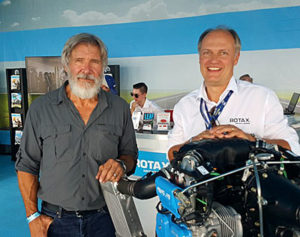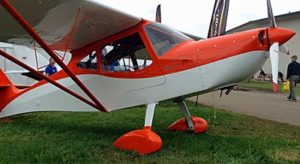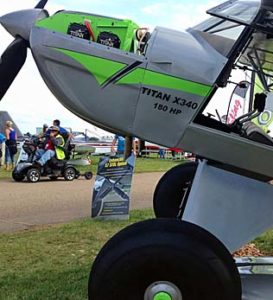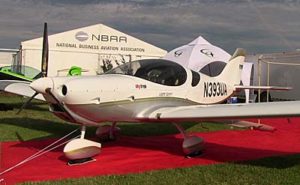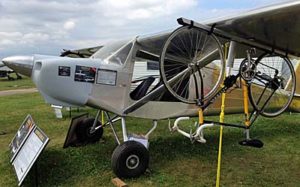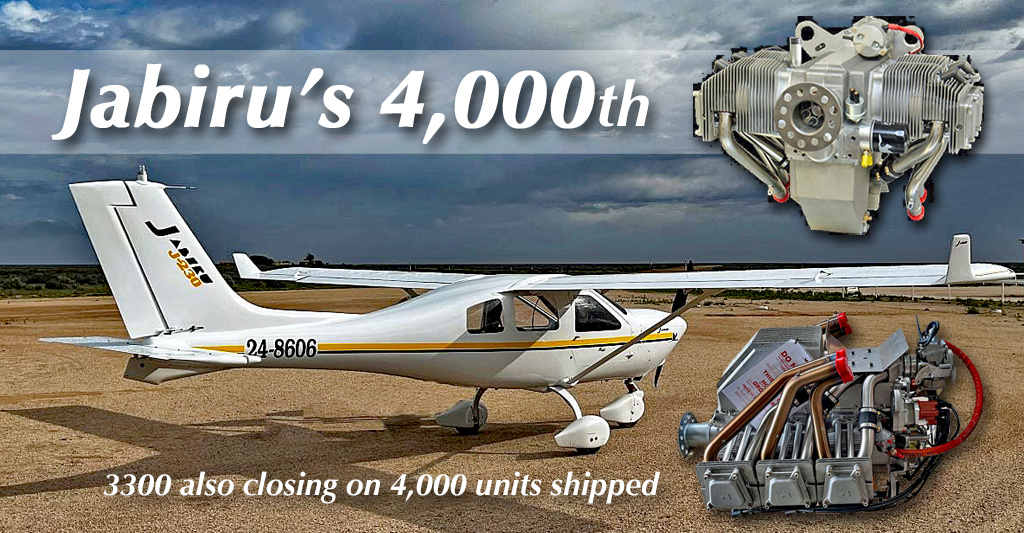
When I was a kid, I was a New York Yankees baseball fan. Why? I’d never been to New York; I lived in the midwest. I loved the baseball team because they won a lot. The saying way back then was, “The American League battle isn’t to determine who wins, but which team might come in second.” Everybody knew the Yankees would win again. (As I said, this was some time back in history.) In light aviation, we have a roughly similar situation. Rotax provides somewhere around 70-80% of all engines for aircraft in the light aircraft space globally. The remaining 20-30% is divided between Continental or Titan, Jabiru, ULPower, and a growing collection of converted auto engines (though the latter, without ASTM approval, are used only on kit aircraft or ELSAs). US Sport Planes owner Scott Severen, who represents Jabiru in America, declared for the Australian manufacturer, “The 4,000th Jabiru 2200 four-cylinder, 81-horsepower engine [was] recently produced at the Jabiru facility.” And, he added, “The 3300 engine [series is] fast approaching this number, too.” So, Jabiru may not be #1, but the “down-under” company achieved a significant benchmark when they shipped number 4,000 of the 2200 series.


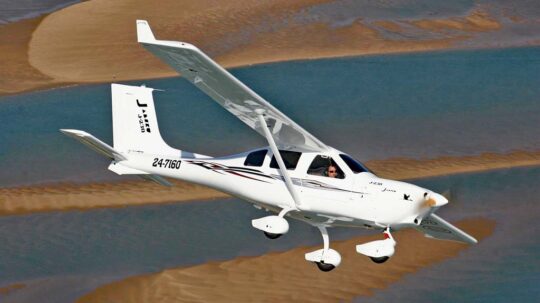 In light aviation, we have a roughly similar situation. Rotax provides somewhere around 70-80% of all engines for aircraft in the light aircraft space globally. The remaining 20-30% is divided between Continental or Titan, Jabiru, ULPower, and a growing collection of converted auto engines (though the latter, without ASTM approval, are used only on kit aircraft or ELSAs).
In light aviation, we have a roughly similar situation. Rotax provides somewhere around 70-80% of all engines for aircraft in the light aircraft space globally. The remaining 20-30% is divided between Continental or Titan, Jabiru, ULPower, and a growing collection of converted auto engines (though the latter, without ASTM approval, are used only on kit aircraft or ELSAs).
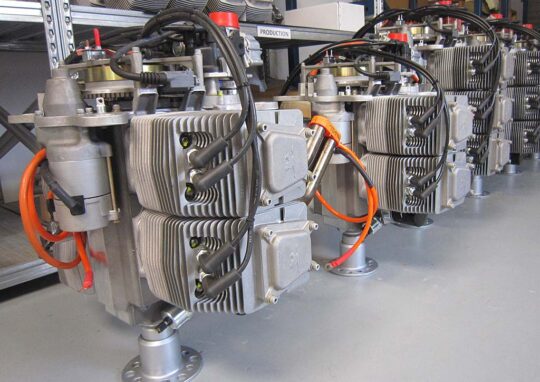 So, Jabiru may not be #1, but the "down-under" company achieved a significant benchmark when they shipped number 4,000 of the 2200 series. Jabiru's 3300 six-cylinder 120-horsepower model is well past 3,000 engines shipped. Therefore, almost 8,000 airplane owners are carried into the sky by Jabiru. Contrasted to the entire American LSA, ELSA, Sport Pilot kit-built aircraft fleet of almost 10,000 aircraft (see
So, Jabiru may not be #1, but the "down-under" company achieved a significant benchmark when they shipped number 4,000 of the 2200 series. Jabiru's 3300 six-cylinder 120-horsepower model is well past 3,000 engines shipped. Therefore, almost 8,000 airplane owners are carried into the sky by Jabiru. Contrasted to the entire American LSA, ELSA, Sport Pilot kit-built aircraft fleet of almost 10,000 aircraft (see 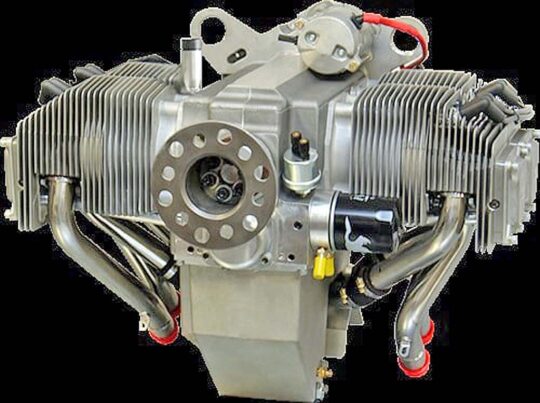
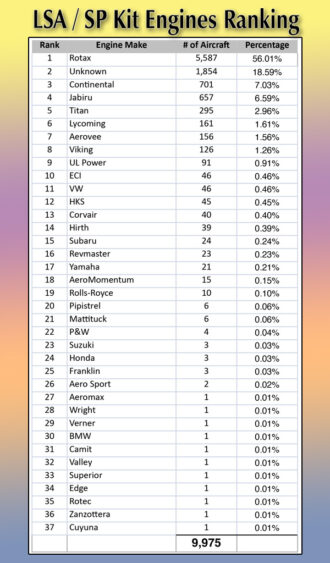
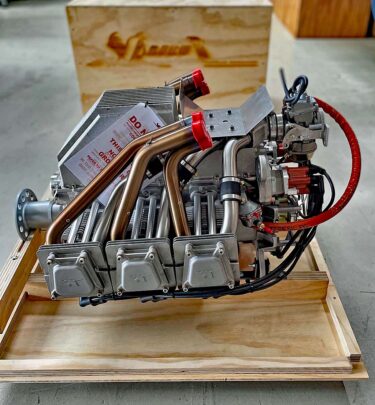 If you are puzzled, as I was, by the #2-ranked Unknown listing, here is Steve's response: "The 'Unknown' refers to aircraft where the FAA data is blank in respect to the engine. Presumably, these aircraft have engines, but the FAA doesn't know what kind. This is a data-quality problem common to all databases. No database of any size ever has perfectly clean and complete data, contrary to what people assume."
"I was surprised to find 'Pipistrel' engines," Steve also wrote. Pipistrel makes airframes and then installs Rotax or other engines into them, don't they? Well, yes, that's been most of their history. Yet in recent years Pipistrel has engaged deeply in electric-powered aircraft and this data has begun to creep into our comprehensive review. (Choosing to pursue electric power appears to have been a shrewd move as Textron paid a boatload of money [more than $200 million, it has been reported!] to acquire the Slovenian company, allegedly mainly for its pioneering work in electric propulsion.)
If you are puzzled, as I was, by the #2-ranked Unknown listing, here is Steve's response: "The 'Unknown' refers to aircraft where the FAA data is blank in respect to the engine. Presumably, these aircraft have engines, but the FAA doesn't know what kind. This is a data-quality problem common to all databases. No database of any size ever has perfectly clean and complete data, contrary to what people assume."
"I was surprised to find 'Pipistrel' engines," Steve also wrote. Pipistrel makes airframes and then installs Rotax or other engines into them, don't they? Well, yes, that's been most of their history. Yet in recent years Pipistrel has engaged deeply in electric-powered aircraft and this data has begun to creep into our comprehensive review. (Choosing to pursue electric power appears to have been a shrewd move as Textron paid a boatload of money [more than $200 million, it has been reported!] to acquire the Slovenian company, allegedly mainly for its pioneering work in electric propulsion.)
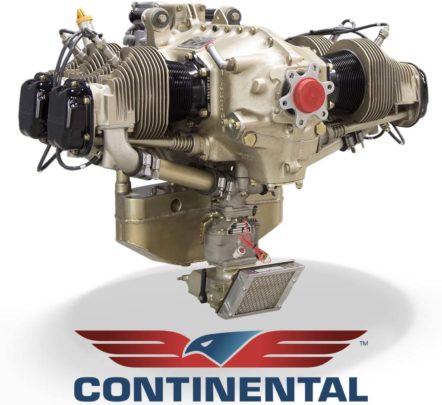 "These Pipistrel powerplant entries are for electric-powered aircraft as the
"These Pipistrel powerplant entries are for electric-powered aircraft as the 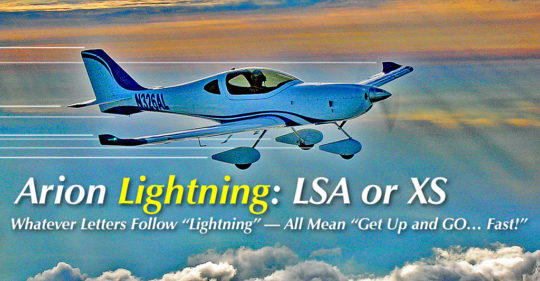 While most light aircraft producers concentrate on either kits or fully-built, a few swing both ways. Some builders unwilling to experiment with two very distinct business models permitted others to contract build a fully-built version while they focus entirely on kit building. Few have managed to do well with both endeavors but Arion seems to have solved the challenges.
Arguably the shapeliest and smoothest aircraft in either the kit or RTF space is Arion Aircraft's Lightning series. Nearly everyone agrees these qualify as fast-when-sitting-still types. Even one of the many electric airplane wannabe producers,
While most light aircraft producers concentrate on either kits or fully-built, a few swing both ways. Some builders unwilling to experiment with two very distinct business models permitted others to contract build a fully-built version while they focus entirely on kit building. Few have managed to do well with both endeavors but Arion seems to have solved the challenges.
Arguably the shapeliest and smoothest aircraft in either the kit or RTF space is Arion Aircraft's Lightning series. Nearly everyone agrees these qualify as fast-when-sitting-still types. Even one of the many electric airplane wannabe producers, 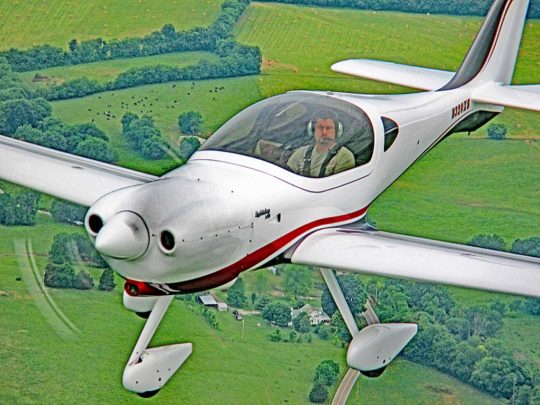 Yet aviation’s leading draw may be going fast as more is always better, right?
Indeed, one reason Arion makes a kit as well as their LS-1 Light-Sport model is because then they can access the excellent speed potential of this slick design.
Let the drooling begin over these beautifully-contoured flying machines that can race 135 to 190 miles an hour for a fairly modest investment.
Arion's LS-1 is a complying Light-Sport Aircraft that meets all the parameters and succeeded in passing a detailed FAA audit with flying colors a few years back.
Lightning XS is the Experimental model on which you can install a more powerful engine.
That these handsome aircraft are also 100% designed and manufactured in the USA may be sweet icing on the cake for many readers.
Yet aviation’s leading draw may be going fast as more is always better, right?
Indeed, one reason Arion makes a kit as well as their LS-1 Light-Sport model is because then they can access the excellent speed potential of this slick design.
Let the drooling begin over these beautifully-contoured flying machines that can race 135 to 190 miles an hour for a fairly modest investment.
Arion's LS-1 is a complying Light-Sport Aircraft that meets all the parameters and succeeded in passing a detailed FAA audit with flying colors a few years back.
Lightning XS is the Experimental model on which you can install a more powerful engine.
That these handsome aircraft are also 100% designed and manufactured in the USA may be sweet icing on the cake for many readers.
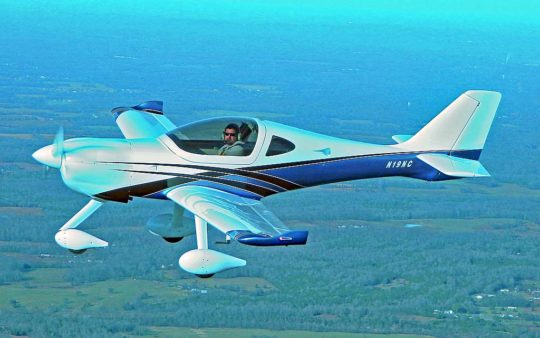 “Lightning LS-1 is designed and built around Jabiru’s powerful 3300 six-cylinder aircraft engine,” noted Arion. “With a displacement of over 200 cubic inches and a direct drive crank, this compact beauty outputs 120 horsepower to deliver performance rarely matched in a Light-Sport Aircraft.” Lightning has no trouble hitting the LSA speed limit of 120 knots (138 mph).
“[However, we] spent more than three years making the kit Lightning as efficient and fast as we could, so slowing down to 120 knots was a complete reversal of our thinking but one that had its benefits,” said principal and designer, Nick Otterback. “By changing the airfoil slightly and adding three feet of wing span, LS-1 stalls below 44 knots clean, giving our aircraft an impressive 52-knot approach speed.”
“Lightning LS-1 is designed and built around Jabiru’s powerful 3300 six-cylinder aircraft engine,” noted Arion. “With a displacement of over 200 cubic inches and a direct drive crank, this compact beauty outputs 120 horsepower to deliver performance rarely matched in a Light-Sport Aircraft.” Lightning has no trouble hitting the LSA speed limit of 120 knots (138 mph).
“[However, we] spent more than three years making the kit Lightning as efficient and fast as we could, so slowing down to 120 knots was a complete reversal of our thinking but one that had its benefits,” said principal and designer, Nick Otterback. “By changing the airfoil slightly and adding three feet of wing span, LS-1 stalls below 44 knots clean, giving our aircraft an impressive 52-knot approach speed.”
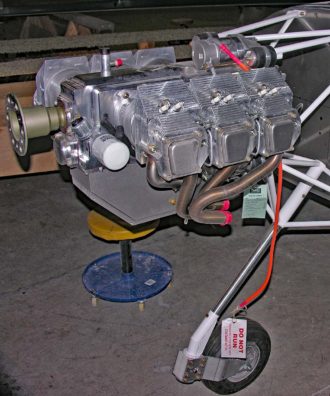 A Jabiru 3300 delivers solo climb in excess of 1,200 fpm and owners can expect 1,000 fpm at its 1,320 pounds gross weight. At cruise speeds of 120 knots, the Jabiru burns a miserly 5.5 gallons an hour. “These are real performance numbers a pilot can rely on; not on a perfect day at sea level or flying around solo, but all loaded up,” stated Nick.
Most companies list useful load, but Arion said the more meaningful payload can be up to 470 pounds. That will allow two big Americans plus some luggage, assuming weight and balance concurs. “Now standard equipped with 40 gallons of fuel, a Lightning pilot can go over 800 nautical miles with VFR reserves,” Nick added.
Lightning XS is sold in kit form. The taller XS with more ground clearance offers a redesigned forward fuselage structure that gives the builder the option to choose engines up to 180 horsepower.
Landing gear offering higher ground clearance permits bigger props on this new kit to allow the speedier model to hit speeds of 160 knots (184 mph) or more. Firewall aft, XS is much the same as the classic Lightning including its 42-inch wide cabin.
A Jabiru 3300 delivers solo climb in excess of 1,200 fpm and owners can expect 1,000 fpm at its 1,320 pounds gross weight. At cruise speeds of 120 knots, the Jabiru burns a miserly 5.5 gallons an hour. “These are real performance numbers a pilot can rely on; not on a perfect day at sea level or flying around solo, but all loaded up,” stated Nick.
Most companies list useful load, but Arion said the more meaningful payload can be up to 470 pounds. That will allow two big Americans plus some luggage, assuming weight and balance concurs. “Now standard equipped with 40 gallons of fuel, a Lightning pilot can go over 800 nautical miles with VFR reserves,” Nick added.
Lightning XS is sold in kit form. The taller XS with more ground clearance offers a redesigned forward fuselage structure that gives the builder the option to choose engines up to 180 horsepower.
Landing gear offering higher ground clearance permits bigger props on this new kit to allow the speedier model to hit speeds of 160 knots (184 mph) or more. Firewall aft, XS is much the same as the classic Lightning including its 42-inch wide cabin.
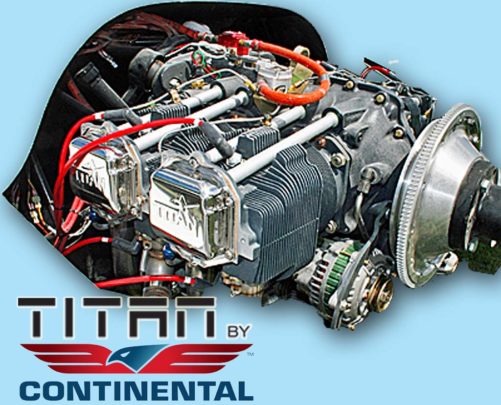
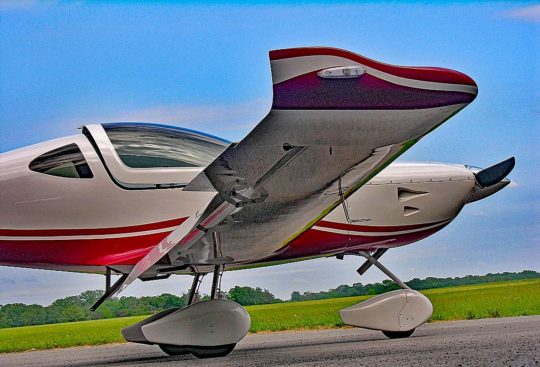 Yet the allure of going fast is great, quickly chewing up the miles en route to your destination. When contemplating a cross country trip of a lengthy distance, fast cannot be too fast. In addition to a higher TAS, we all yearn for a tailwind that will raise our ground speed by another 20 mph.
Lightning with the big Titan engine required a bulging nose cowl, Nick said. Taller landing gear for bigger props, bigger brakes, and 40 gallon fuel tanks are also among some of the features of this kit.
How fast does Lightning XS go? Early testing revealed max cruise at 165 knots (190 mph) TAS at 8,500 feet density altitude at full gross. Climb is a stunning 2,000 fpm. These figures may sound boastful but but reflect real-time experience as recorded by the no-nonsense Nick Otterback.
Yet the allure of going fast is great, quickly chewing up the miles en route to your destination. When contemplating a cross country trip of a lengthy distance, fast cannot be too fast. In addition to a higher TAS, we all yearn for a tailwind that will raise our ground speed by another 20 mph.
Lightning with the big Titan engine required a bulging nose cowl, Nick said. Taller landing gear for bigger props, bigger brakes, and 40 gallon fuel tanks are also among some of the features of this kit.
How fast does Lightning XS go? Early testing revealed max cruise at 165 knots (190 mph) TAS at 8,500 feet density altitude at full gross. Climb is a stunning 2,000 fpm. These figures may sound boastful but but reflect real-time experience as recorded by the no-nonsense Nick Otterback.
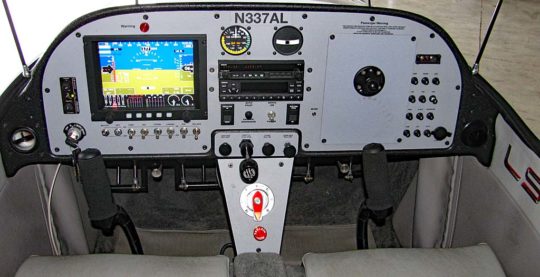 Most buyers may elect more than the basics but the fully-built Light-Sport Aircraft version of Lightning, called LS-1, is base priced at the genuine bargain of $115,000. Yet if you have time, the interest, and enjoy constructing a kit, Lightning XS has a base kit price of $39,900 with the
Most buyers may elect more than the basics but the fully-built Light-Sport Aircraft version of Lightning, called LS-1, is base priced at the genuine bargain of $115,000. Yet if you have time, the interest, and enjoy constructing a kit, Lightning XS has a base kit price of $39,900 with the 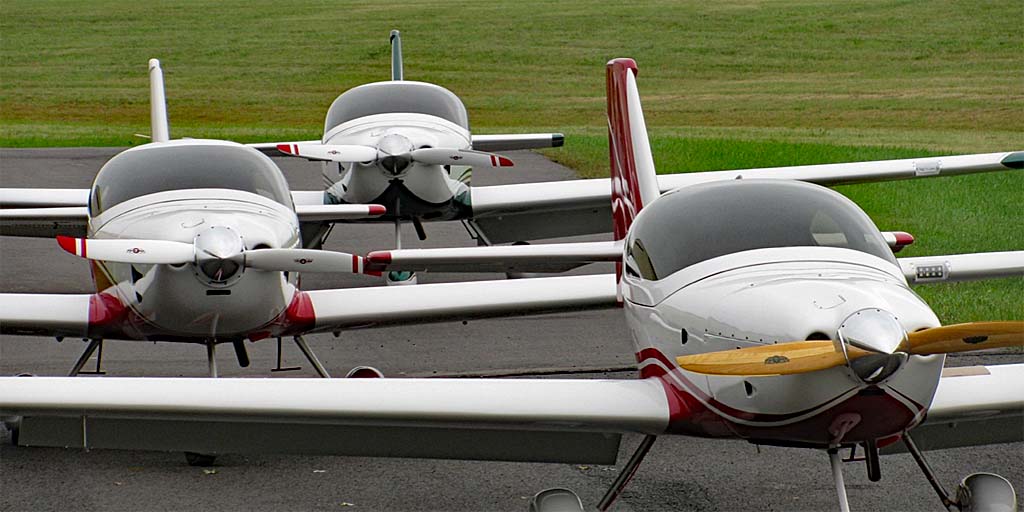
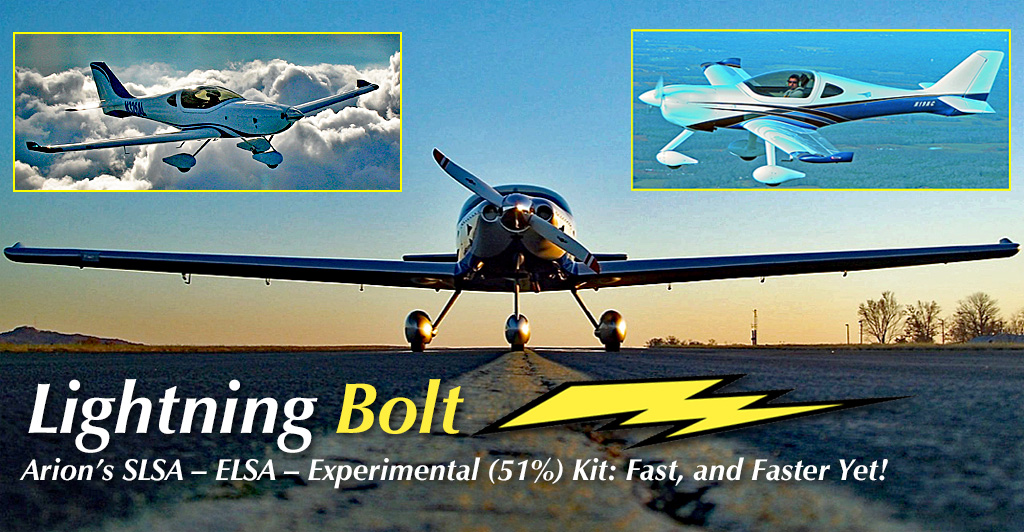
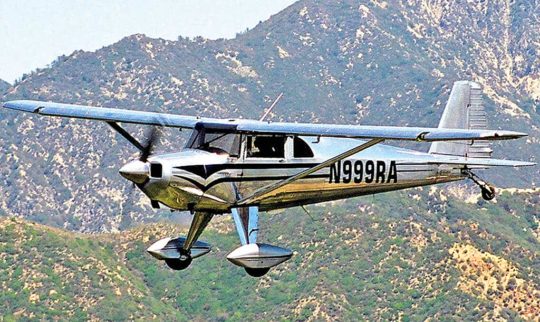
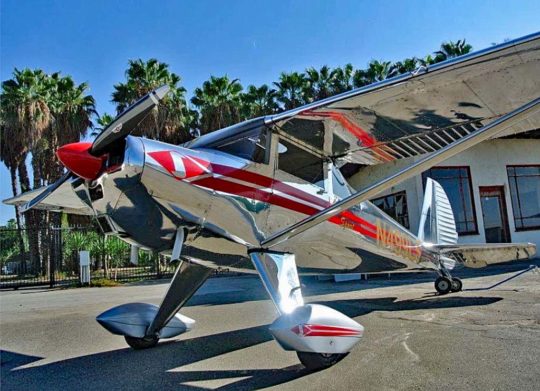 Now, Luscombe Aircraft Corporation (LAC) has gone cross country again, this time to Jamestown, New York in the western part of the Empire State. Here's
Now, Luscombe Aircraft Corporation (LAC) has gone cross country again, this time to Jamestown, New York in the western part of the Empire State. Here's 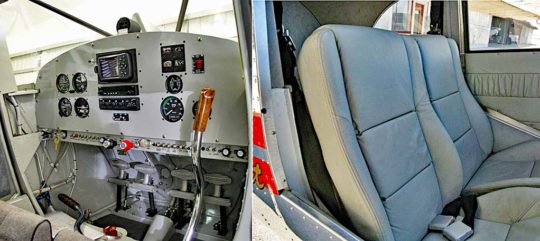 "Then, we will start assembling complete airplanes using LSA regulations," confirmed Steve. "Built as a Light Sport Aircraft to ASTM industry consensus standards," Steve said, "the Model-8 is … an all-metal airplane originally designed and still constructed to USA CAR 4a standard airworthiness requirements." CAR standards preceded today's Part 23 rules.
In New York state, Steve noted that he and his partner want to retain the vintage look of Luscombe 8F Silveraire. That doesn't mean it's old fashioned, though. Hidden behind the classic panel and glove box doors that were popular from 1942 to 1959 lies state of the art power management panel and instruments." (See panel images at bottom.)
"Then, we will start assembling complete airplanes using LSA regulations," confirmed Steve. "Built as a Light Sport Aircraft to ASTM industry consensus standards," Steve said, "the Model-8 is … an all-metal airplane originally designed and still constructed to USA CAR 4a standard airworthiness requirements." CAR standards preceded today's Part 23 rules.
In New York state, Steve noted that he and his partner want to retain the vintage look of Luscombe 8F Silveraire. That doesn't mean it's old fashioned, though. Hidden behind the classic panel and glove box doors that were popular from 1942 to 1959 lies state of the art power management panel and instruments." (See panel images at bottom.)
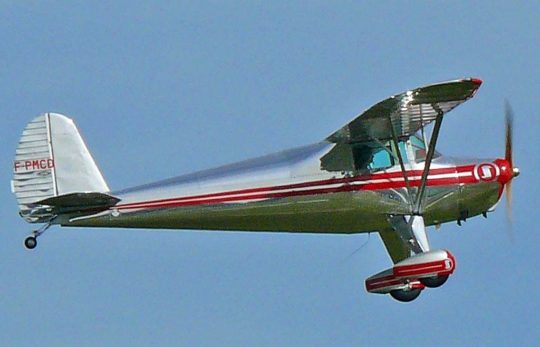
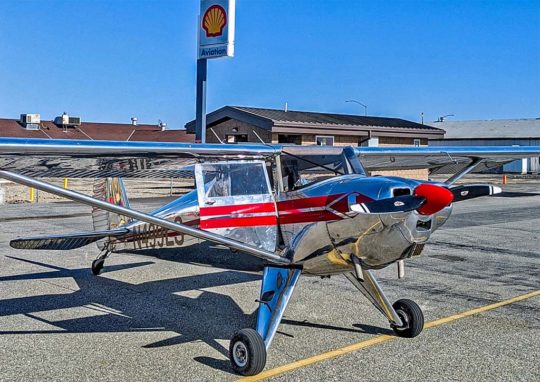 "We have also worked extensively with the professional aviation archivists at AirCorps Aviation in Bemidji, Minnesota to develop a digital archive of Luscombe’s large collection of historical records, engineering drawings, and production work orders. We have inspected and are refurbishing production jigs and tooling to resume production of those hard-to-find parts.
LAC is developing close working relationships with the local metal working specialty shops "to leverage the rich Western New York and North Pennsylvania manufacturing base. Using the original Luscombe jigs, restorations [can be] expertly crafted in our 25,000-square-foot hangar at the Jamestown Airport (KJHW).
"We have also worked extensively with the professional aviation archivists at AirCorps Aviation in Bemidji, Minnesota to develop a digital archive of Luscombe’s large collection of historical records, engineering drawings, and production work orders. We have inspected and are refurbishing production jigs and tooling to resume production of those hard-to-find parts.
LAC is developing close working relationships with the local metal working specialty shops "to leverage the rich Western New York and North Pennsylvania manufacturing base. Using the original Luscombe jigs, restorations [can be] expertly crafted in our 25,000-square-foot hangar at the Jamestown Airport (KJHW).
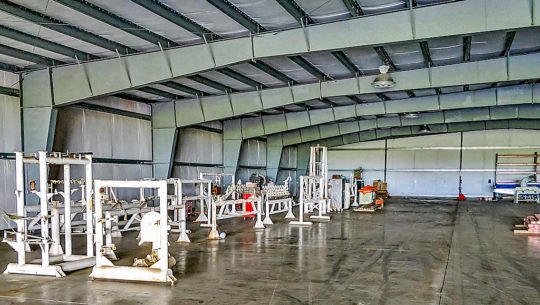
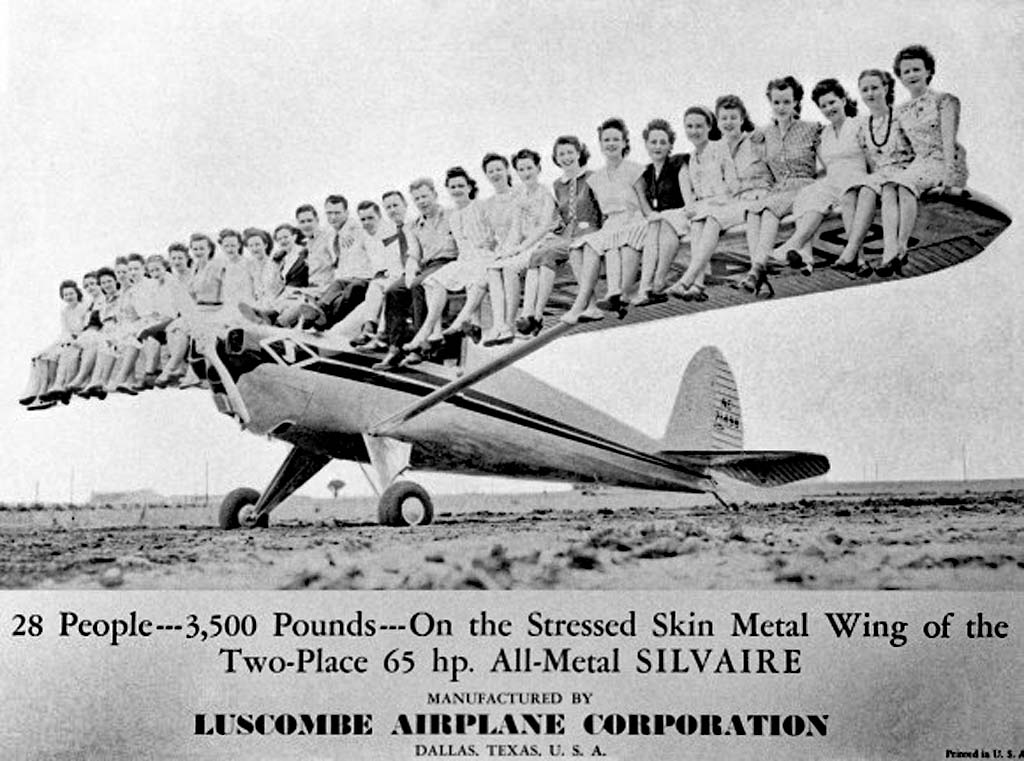
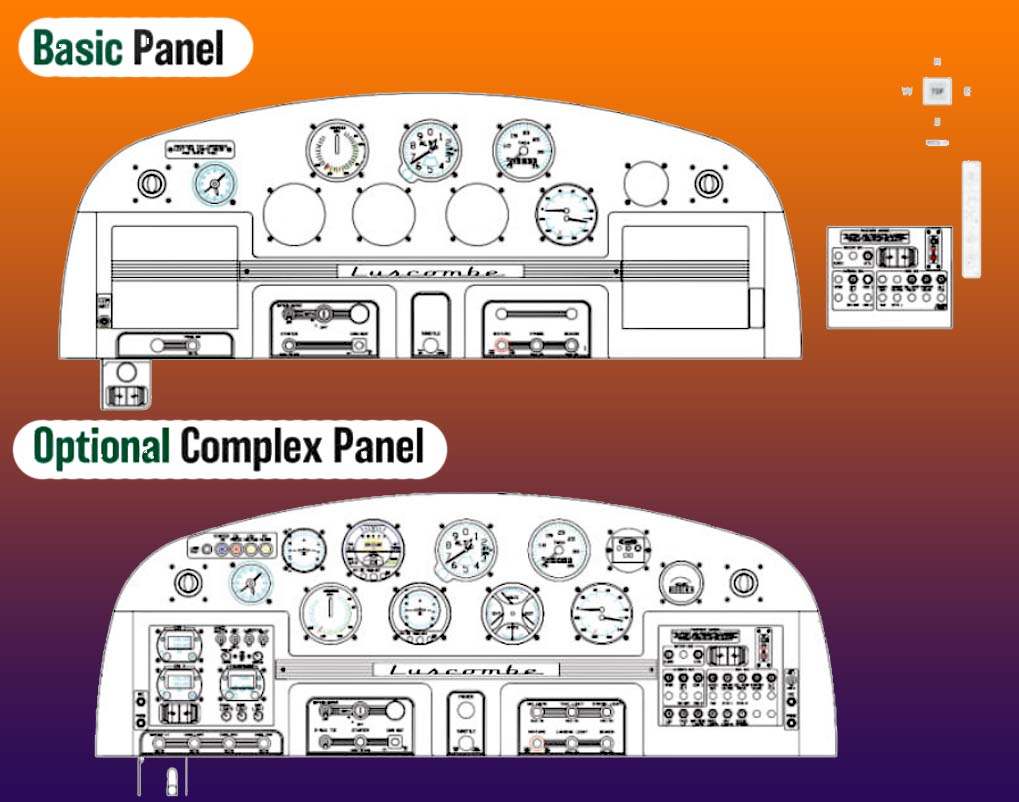
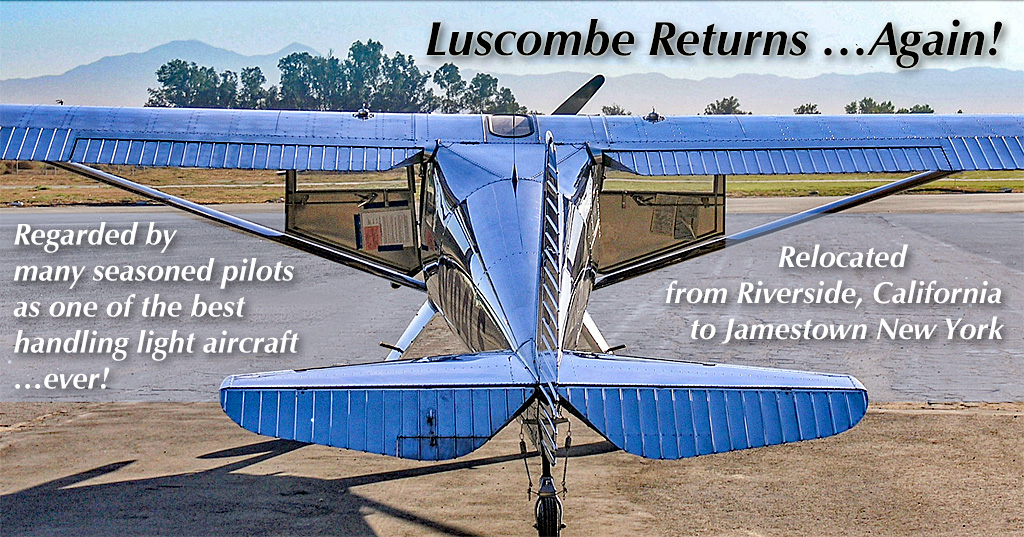
 From my view — and to some extent for all the readers of this website — the single most valuable aspect of Midwest LSA Expo is the great ease with which one can take one or more demo flights. For me in particular, this is a unmatched opportunity to go aloft in an aircraft so I can write about it.
Regretfully, my video partner Videoman Dave was not allowed by U.S. authorities to enter the country from Canada, so we did not get to capture Video Pilot Reports where several aircraft get fitted with Dave's collection of seven
From my view — and to some extent for all the readers of this website — the single most valuable aspect of Midwest LSA Expo is the great ease with which one can take one or more demo flights. For me in particular, this is a unmatched opportunity to go aloft in an aircraft so I can write about it.
Regretfully, my video partner Videoman Dave was not allowed by U.S. authorities to enter the country from Canada, so we did not get to capture Video Pilot Reports where several aircraft get fitted with Dave's collection of seven 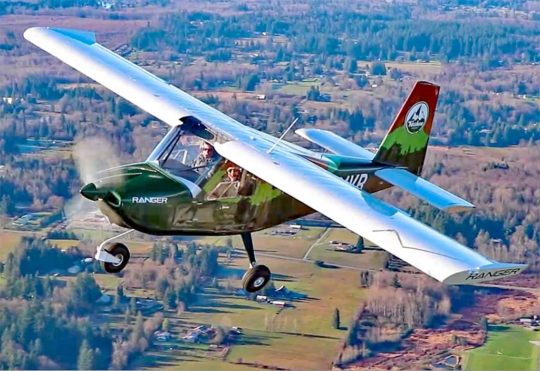 Named for a small island in the Puget Sound region of Washington state near Seattle,
Named for a small island in the Puget Sound region of Washington state near Seattle, 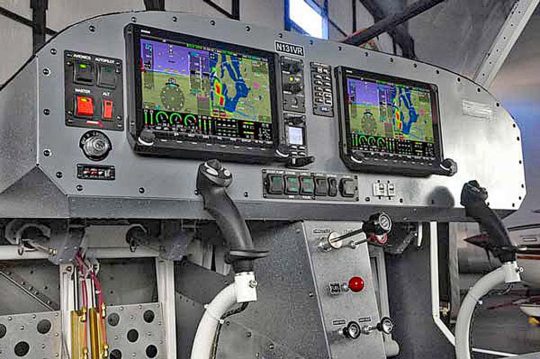 While Vashon is colocated with Dynon in a Woodinville industrial park, Vashon maintains a separate corporate structure. Company employees of each defend the co-owned businesses as distinct from one another.
Vashon produces structural components and puts fuselages and wings together in Woodinville but these sub-assemblies are then transported to a hangar at the Paine Field Airport (KPAE) in Everett. This is the same airfield where final assembly takes place at Boeing’s massive facility.
While Vashon is colocated with Dynon in a Woodinville industrial park, Vashon maintains a separate corporate structure. Company employees of each defend the co-owned businesses as distinct from one another.
Vashon produces structural components and puts fuselages and wings together in Woodinville but these sub-assemblies are then transported to a hangar at the Paine Field Airport (KPAE) in Everett. This is the same airfield where final assembly takes place at Boeing’s massive facility.
 Ranger has a listed empty weight of 875 pounds before adding options. That leaves a useful load of 445 pounds. With fuel tanks full of 28.1 gallons or 169 pounds, payload drops to 276 pounds. Fortunately lots of flying is done locally so half tanks are still plenty and would provide a payload of 361 pounds or a couple occupants at 180 pounds each. (Of course, this may change when FAA issues its new regulation in 2023.)
With half tanks and no baggage, demo pilot Kurt Robertson and I probably flew below the gross weight limit. We could have flown for better than three hours.
Vashon chose the 100 horsepower
Ranger has a listed empty weight of 875 pounds before adding options. That leaves a useful load of 445 pounds. With fuel tanks full of 28.1 gallons or 169 pounds, payload drops to 276 pounds. Fortunately lots of flying is done locally so half tanks are still plenty and would provide a payload of 361 pounds or a couple occupants at 180 pounds each. (Of course, this may change when FAA issues its new regulation in 2023.)
With half tanks and no baggage, demo pilot Kurt Robertson and I probably flew below the gross weight limit. We could have flown for better than three hours.
Vashon chose the 100 horsepower 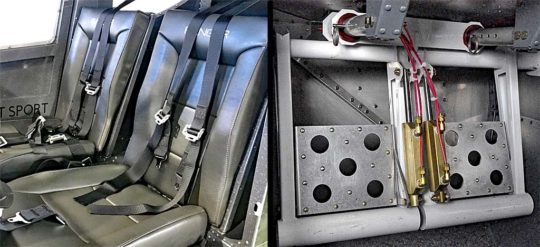 Taxiing Ranger uses a castoring nosewheel. This means steering with brakes at low speeds, so both seat are fitted with directional foot pedals, which allow for very tight turns. Castor steering takes a bit of familiarization but ramp maneuverability is unparalleled. Flight controls involve dual joysticks and a center-mounted throttle.
Takeoff was simple and straightforward. After liftoff, Ranger's rate of climb varied between 600-800 fpm to 3,500 where we practiced some stalls. Fuel burn during best rate of climb appears to be north of seven gallons an hour, about the same as a Rotax 912iS. Kurt reported he routinely sees 118 knots at altitude and burns 6-6.5 gallons an hour at this higher cruise speed.
Flaps are electrically actuated with a button — one push for 20 degrees; another push deploys flaps to 40 degrees. We used one notch for takeoff and either one, both, or none for landing.
Taxiing Ranger uses a castoring nosewheel. This means steering with brakes at low speeds, so both seat are fitted with directional foot pedals, which allow for very tight turns. Castor steering takes a bit of familiarization but ramp maneuverability is unparalleled. Flight controls involve dual joysticks and a center-mounted throttle.
Takeoff was simple and straightforward. After liftoff, Ranger's rate of climb varied between 600-800 fpm to 3,500 where we practiced some stalls. Fuel burn during best rate of climb appears to be north of seven gallons an hour, about the same as a Rotax 912iS. Kurt reported he routinely sees 118 knots at altitude and burns 6-6.5 gallons an hour at this higher cruise speed.
Flaps are electrically actuated with a button — one push for 20 degrees; another push deploys flaps to 40 degrees. We used one notch for takeoff and either one, both, or none for landing.
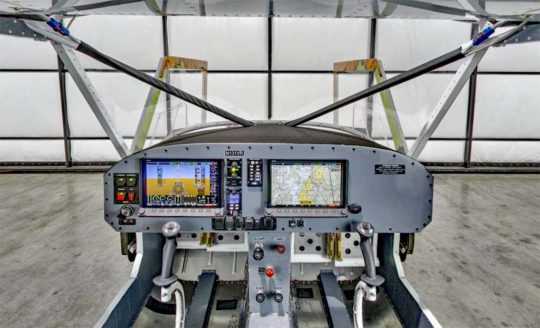 Cockpit width is stated as 47 inches, broad compared to most GA aircraft but about standard for LSA; it was roomy for Kurt and me. One neat trick: remove the seat cushions and you can fold both seats nearly flat allowing you to camp overnight in Ranger. It measures a generous 78 inches from the aft bulkhead to the joysticks.
The large space aft of the seats can hold up to 100 pounds. While most loading won't tolerate that much baggage weight, the space is large enough for sleeping bags, tents, fishing poles, and other (lighter weight) outdoor gear.
Buy All-American? — The western U.S. company boasts that its Special LSA is fully American. "Ranger R7 is designed, engineered, tested, and manufactured at the Vashon Aircraft factory headquarters near Seattle, Washington, and is assembled at its Paine Field assembly and delivery center (on the same airfield as Boeing's wide body airliner factory)," said
Cockpit width is stated as 47 inches, broad compared to most GA aircraft but about standard for LSA; it was roomy for Kurt and me. One neat trick: remove the seat cushions and you can fold both seats nearly flat allowing you to camp overnight in Ranger. It measures a generous 78 inches from the aft bulkhead to the joysticks.
The large space aft of the seats can hold up to 100 pounds. While most loading won't tolerate that much baggage weight, the space is large enough for sleeping bags, tents, fishing poles, and other (lighter weight) outdoor gear.
Buy All-American? — The western U.S. company boasts that its Special LSA is fully American. "Ranger R7 is designed, engineered, tested, and manufactured at the Vashon Aircraft factory headquarters near Seattle, Washington, and is assembled at its Paine Field assembly and delivery center (on the same airfield as Boeing's wide body airliner factory)," said 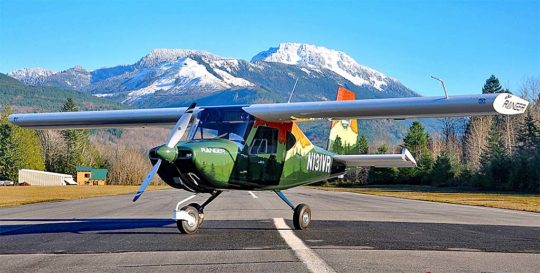 The fully loaded demo Ranger Kurt and I flew had autopilot and two SkyView HDX screens. The introductory pricing has risen slightly but those on a budget can be well served by the base Glacier model that lists for $119,500 and includes a Dynon 10-inch SkyView HDX EFIS with two-axis autopilot, 2020-compliant ADS-B Out, and all the standard features you'd expect. Ranger also comes with a three-year warranty. Unfortunately, the under-$100,000 price tag of three years ago has disappeared.
Exterior Treatment — The "Founders Design" with the Washington state scene (photos) adds $9,500 to the base price. A version with the back half looking similar and the front fuselage in white is only $2,500. A treatment on just the top half of the vertical stabilizer is included in the price.
If six figures aren't in your checkbook the company observed, "Vashon Aircraft is proud to collaborate with AOPA Finance to offer our customers competitive financing options for their Ranger purchase."
Check all Vashon Ranger's
The fully loaded demo Ranger Kurt and I flew had autopilot and two SkyView HDX screens. The introductory pricing has risen slightly but those on a budget can be well served by the base Glacier model that lists for $119,500 and includes a Dynon 10-inch SkyView HDX EFIS with two-axis autopilot, 2020-compliant ADS-B Out, and all the standard features you'd expect. Ranger also comes with a three-year warranty. Unfortunately, the under-$100,000 price tag of three years ago has disappeared.
Exterior Treatment — The "Founders Design" with the Washington state scene (photos) adds $9,500 to the base price. A version with the back half looking similar and the front fuselage in white is only $2,500. A treatment on just the top half of the vertical stabilizer is included in the price.
If six figures aren't in your checkbook the company observed, "Vashon Aircraft is proud to collaborate with AOPA Finance to offer our customers competitive financing options for their Ranger purchase."
Check all Vashon Ranger's 
 Around the world outside the U.S., aviation fuels like 100LL are not widely available.
Around the world outside the U.S., aviation fuels like 100LL are not widely available. 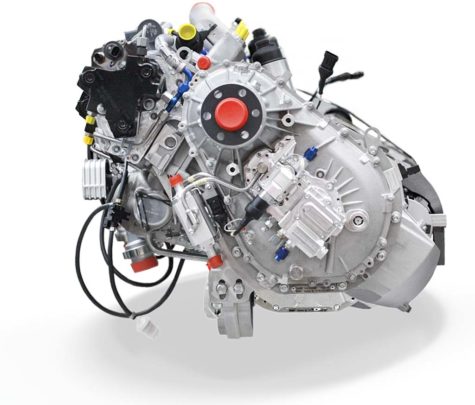
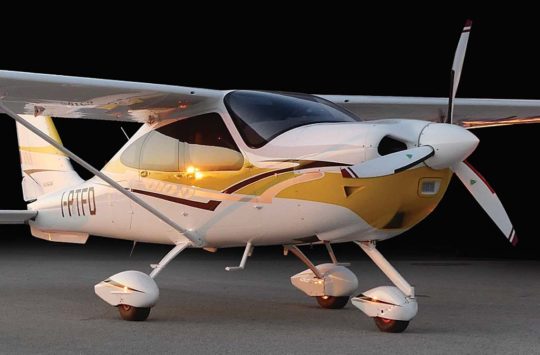
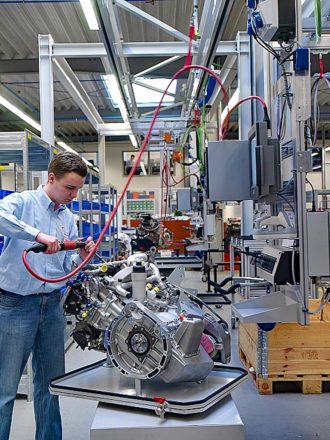
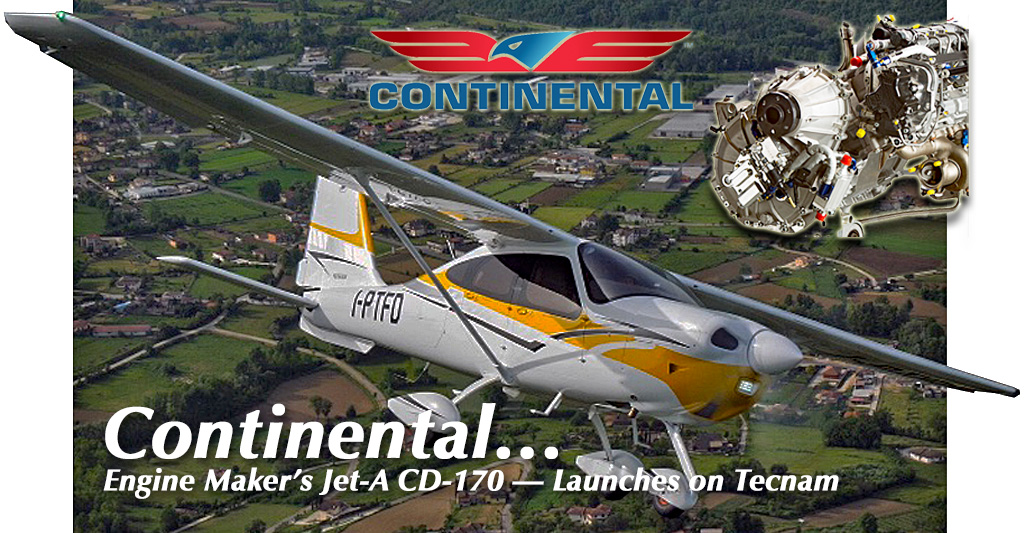
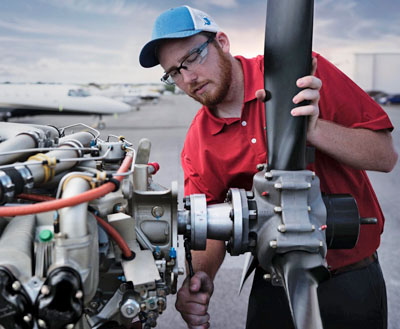 A few years ago, I visited Continental Motors in Mobile Alabama on the Gulf coast of the southern U.S. state.
Here's
A few years ago, I visited Continental Motors in Mobile Alabama on the Gulf coast of the southern U.S. state.
Here's  "With this new dawn comes a new name and brand identity for a major leader in the world of aviation. Introducing Continental Aerospace Technologies," stated their press release.
However, they're busy doing much more than rebadging the company with a new, modern look. Their video below helps tell a fuller story.
"With this new dawn comes a new name and brand identity for a major leader in the world of aviation. Introducing Continental Aerospace Technologies," stated their press release.
However, they're busy doing much more than rebadging the company with a new, modern look. Their video below helps tell a fuller story.
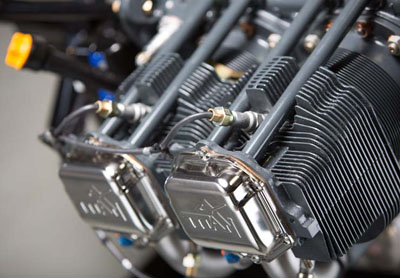
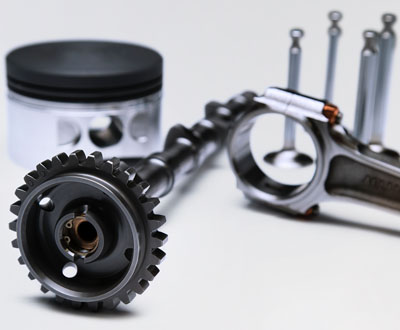
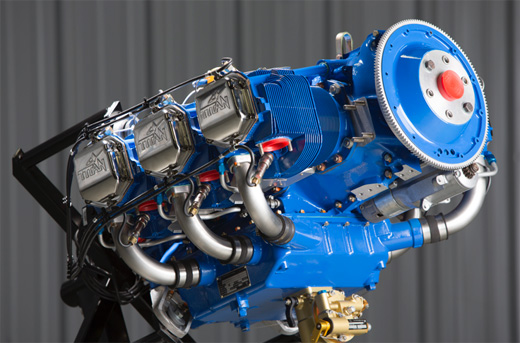
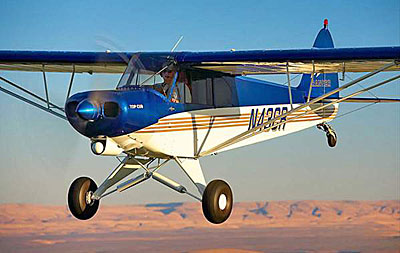 The experimental Top Cub is based on the Part 23 certified Top Cub CC18-180, originally designed by CubCrafters and acquired by Top Cub Aircraft Inc., a subsidiary company of Liaoning, in 2015.
The experimental Top Cub is based on the Part 23 certified Top Cub CC18-180, originally designed by CubCrafters and acquired by Top Cub Aircraft Inc., a subsidiary company of Liaoning, in 2015.
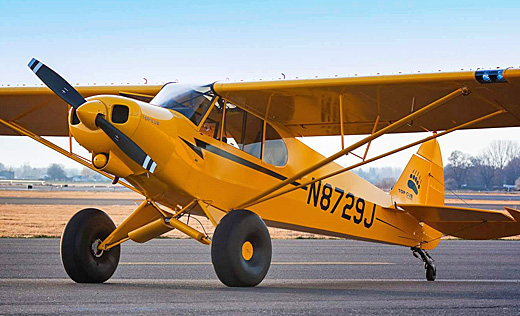
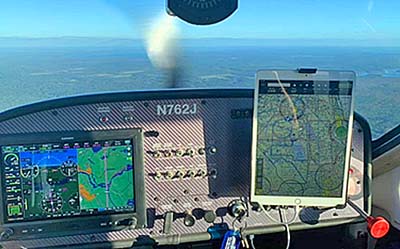
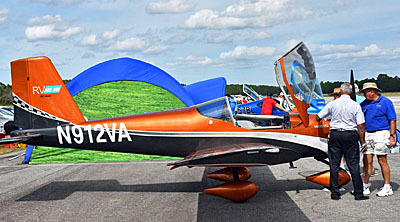
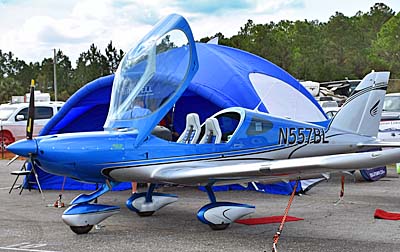
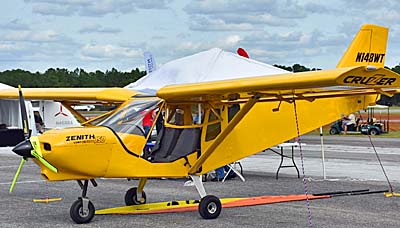
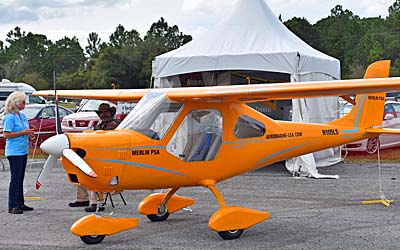
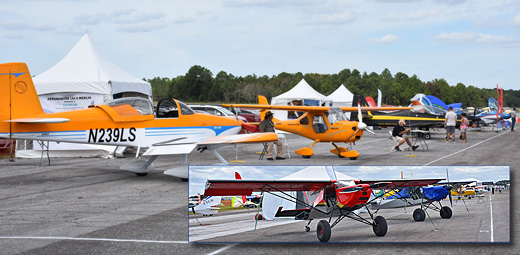
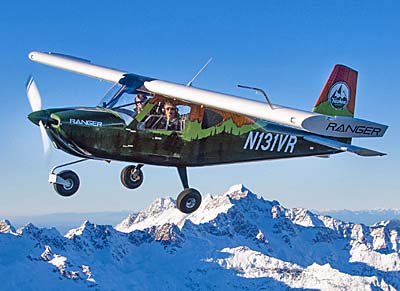 From Washington State arrives a fresh, new airplane created from scratch to enter the Special LSA space. You don't know the company but you may know the people, at least indirectly. Welcome to Vashon and their new Ranger R7!
Ranger R7 is an all-metal, two-place, high-wing, single engine airplane equipped with tricycle landing gear and castering nose wheel. The company says Ranger has been in development for five years and has been flying for more than two.
Vashon Aircraft was founded by John Torode, and the Ranger R7 was designed by Pacific Northwest aeronautical engineer, Ken Krueger. Does the name Torode sound familiar? It should. This is the man behind Dynon Avionics. Other key players are General Manager Scott Taylor and Marketing Manager Amy Bellesheim.
From Washington State arrives a fresh, new airplane created from scratch to enter the Special LSA space. You don't know the company but you may know the people, at least indirectly. Welcome to Vashon and their new Ranger R7!
Ranger R7 is an all-metal, two-place, high-wing, single engine airplane equipped with tricycle landing gear and castering nose wheel. The company says Ranger has been in development for five years and has been flying for more than two.
Vashon Aircraft was founded by John Torode, and the Ranger R7 was designed by Pacific Northwest aeronautical engineer, Ken Krueger. Does the name Torode sound familiar? It should. This is the man behind Dynon Avionics. Other key players are General Manager Scott Taylor and Marketing Manager Amy Bellesheim.
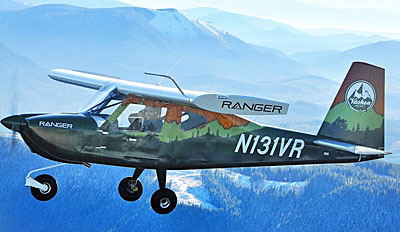 The team picked the name Vashon Aircraft because "we wanted to give it a Pacific Northwest rugged, utilitarian 'jeep' feel," said Bellesheim. "You can go out in nature, get dirty, and get back in the airplane without worrying about messing the airplane up. We live among national parks so the name Ranger comes from [these] parks. We chose R7 because it sounds modern and cool."
The design goal appears to be a rugged outdoor-action airplane but with sophiciated avionics, a natural if unlikely pairing resulting from the close relationship to
The team picked the name Vashon Aircraft because "we wanted to give it a Pacific Northwest rugged, utilitarian 'jeep' feel," said Bellesheim. "You can go out in nature, get dirty, and get back in the airplane without worrying about messing the airplane up. We live among national parks so the name Ranger comes from [these] parks. We chose R7 because it sounds modern and cool."
The design goal appears to be a rugged outdoor-action airplane but with sophiciated avionics, a natural if unlikely pairing resulting from the close relationship to 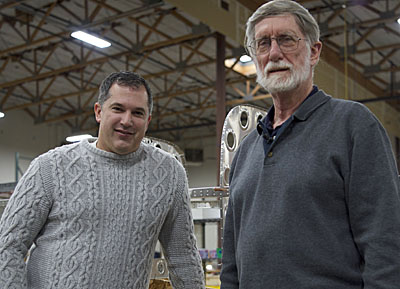
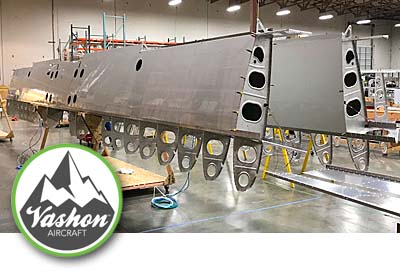 Vashon claims to be one of the first companies to form pre-painted metal. "We purchase sheets of stock aluminum that have been painted and then form them into parts using a modern turret punch, laser, and hydropress technology. Because of that we have taken a whole step out of the airplane building process by eliminating the need to paint after assembly," reported Bellesheim. "We also spent a lot of time developing painted rivets so that they match the airplane."
For power, Vashon chose
Vashon claims to be one of the first companies to form pre-painted metal. "We purchase sheets of stock aluminum that have been painted and then form them into parts using a modern turret punch, laser, and hydropress technology. Because of that we have taken a whole step out of the airplane building process by eliminating the need to paint after assembly," reported Bellesheim. "We also spent a lot of time developing painted rivets so that they match the airplane."
For power, Vashon chose 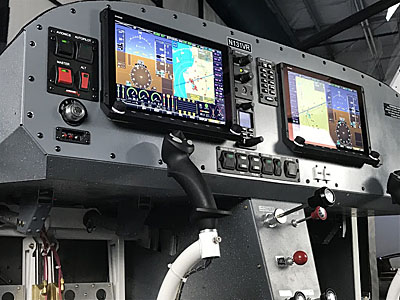 The prototype Ranger has "canvas slate gray upholstery, light gray floor and sidewalls, a gray instrument panel, and gray center console. At higher price points, you can add other colors and accents. As they move into producing additional aircraft, "the colors for interior will be either gray or black or a combination of both."
In progressive upgrades, you can get more goodies in their "Glacier" package for $107,500; or their "Redwood" upgrade for $114,500, or the "Appalachian" for $129,500, a variant described as their "flight school model."
"We won’t take deposits," said Vashon. "We won’t take your money until we have an airplane for you."
The prototype Ranger has "canvas slate gray upholstery, light gray floor and sidewalls, a gray instrument panel, and gray center console. At higher price points, you can add other colors and accents. As they move into producing additional aircraft, "the colors for interior will be either gray or black or a combination of both."
In progressive upgrades, you can get more goodies in their "Glacier" package for $107,500; or their "Redwood" upgrade for $114,500, or the "Appalachian" for $129,500, a variant described as their "flight school model."
"We won’t take deposits," said Vashon. "We won’t take your money until we have an airplane for you."
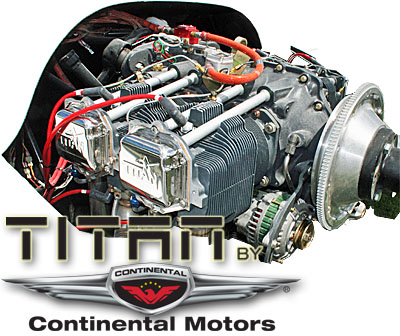 You know this decades-old company for their popular
You know this decades-old company for their popular 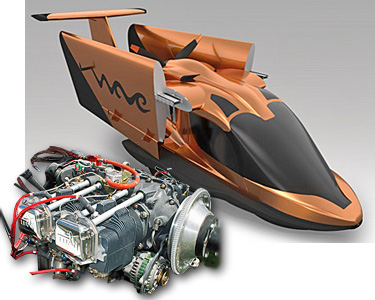
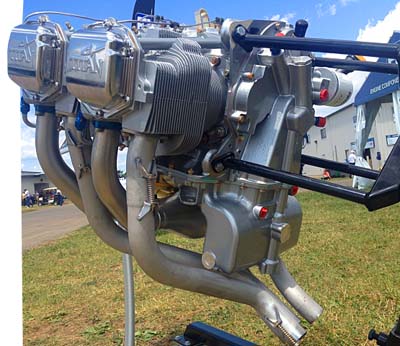 The new quarters will include office and manufacturing spaces and Continental Motors plans to invest more than $70 million in the latest manufacturing equipment, a modern new building, advanced manufacturing processes, quality management systems, and customer support.
Continental Motors Group is a subsidiary of AVIC International Holding Corporation of Beijing, China. The Alabama manufacturer offers gasoline and diesel piston engines, spare parts, engine and aircraft services, avionics equipment and repairs as well as pilot training for the general aviation marketplace. Continental is an international operation employing approximately 450 staff in Mobile, Alabama, 200 more in St. Egidien, Germany; and another eight in Beijing, China.
Established in 1979, AVIC International Holding Corporation boasts 80,000 employees across 400 subsidiaries spread over 50 countries.
Congratulations, Continental!
The new quarters will include office and manufacturing spaces and Continental Motors plans to invest more than $70 million in the latest manufacturing equipment, a modern new building, advanced manufacturing processes, quality management systems, and customer support.
Continental Motors Group is a subsidiary of AVIC International Holding Corporation of Beijing, China. The Alabama manufacturer offers gasoline and diesel piston engines, spare parts, engine and aircraft services, avionics equipment and repairs as well as pilot training for the general aviation marketplace. Continental is an international operation employing approximately 450 staff in Mobile, Alabama, 200 more in St. Egidien, Germany; and another eight in Beijing, China.
Established in 1979, AVIC International Holding Corporation boasts 80,000 employees across 400 subsidiaries spread over 50 countries.
Congratulations, Continental!